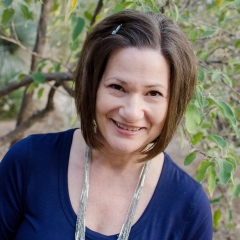
Why we could all benefit from thinking like a nurse right now
By
—
May is Nurses Month, which honors the nation’s registered nurses through celebrations, education and recognition. And as the country focuses its attention on supporting this critical workforce, there’s also a lot to be learned about the nursing worldview and how, if adopted by non-nurses, we might all get along a bit better.
Heidi Sanborn, a clinical assistant professor and the director of Edson College’s RN-BSN and Concurrent Enrollment programs, recently presented on this topic during a Midday Mindfulness session.
During the pandemic, and even before, social media platforms have polarized how many people see and relate to the world around them. As a result, there’s been a growing divide within communities, breeding isolation and distrust.
Sanborn says borrowing from the Nursing Code of Ethics, which is the foundation of the nursing worldview, can help people disrupt this negative cycle.
“Nurses have been ranked as the most trusted profession for nearly two decades and there’s a reason for that. The nursing dogma that guides our treatment of others and how we practice presence and mindfulness during a crisis could be really beneficial at this moment for non-nurses to explore,” she said.
Learning to adopt this unique way of relating to others can promote a sense of well-being and peace according to Sanborn, who has been applying this to her own life over the last year.
So what is the nursing worldview and how can you incorporate it into your own life? We asked Sanborn, who’s been a nurse for more than two decades, to walk us through it.
Question: What is the nursing worldview?
Answer: This really stems from the Nursing Code of Ethics, which is a set of provisions, of expected behavior, that all nurses are obligated to uphold as part of our professional identity. This includes things like practicing with compassion and respect for the inherent dignity, worth and unique attributes of every person. We have a responsibility to advocate for the rights of every patient.
As nurses, we are expected to set our personal views and values aside and allow the patient’s views and values to become the center of the equation.
There could be a lack of harmony between what I think is right and wrong or how I view the world and how my patients view the world. That is OK. As a nurse, I have to accept that dissonance and set myself aside. I have to really focus on that patient and what they need in order to navigate the health care system in a way that’s most meaningful for them.
It really boils down to this: As a nurse, none of my patients need to understand me. It’s irrelevant in the nurse-to-patient relationship. What is relevant is that I understand the patient. That’s my job and my role as a nurse.
Q: Can you give an example of using this philosophy outside a hospital?
A: Let’s use social media as an example since that’s where we’ve seen a lot of division, especially in the last year. If I view everybody that I encounter on Instagram, Facebook or Twitter the way I’m expected to view all of the patients that I encounter, it changes the frame that I have for that person. I step away from judging my neighbor because they voted for somebody or because they don’t believe in something I do, or because they don’t want to get a vaccine based on disinformation — you name it. If I set aside that idea that I’m there to judge, that I’m there to be understood, and I focus more on understanding, it really changes that frame for me.
Q: What are some of the benefits of using this philosophy?
A: By applying this framework to everyday encounters and things that would normally set someone off or stir up anxiety, you can break the negative cycle and find a sense of well-being.
That is really where the nursing worldview can help. By refocusing on the inherent dignity and worth of others, and their right to live life as they need to live it, we can set aside the need to carry any angst ourselves. It doesn’t solve the deep injustices and disparities that are causing strife in our world, but it does release us from absorbing the anger from negative encounters we have.
From my own experience, applying this in my personal life has been a really important piece of my own well-being and my own mental stability over the last year. It has helped me find some peace.
Q: Where can people learn more about the nursing worldview and other tools?
A: My Midday Mindfulness session is a great place to start. I cover what we talked about here, but in a lot more depth. Also, I share some of the tools I use to combat compassion fatigue, which is something I can tell you a lot of nurses are dealing with right now.
My favorite and most portable tool is pranayama, also known as box breathing. You can follow along with an example here. Another tool that I use often is listening to Himalayan singing bowls. I find the vibrations of the bowls replace the feeling of anxiety that builds up in my chest. I meditate to the bowls, along with my favorite guide, Ben Irons. But I don’t need to be meditating for them to help me. I have been known to play them when I’m driving or walking. You should try it!

